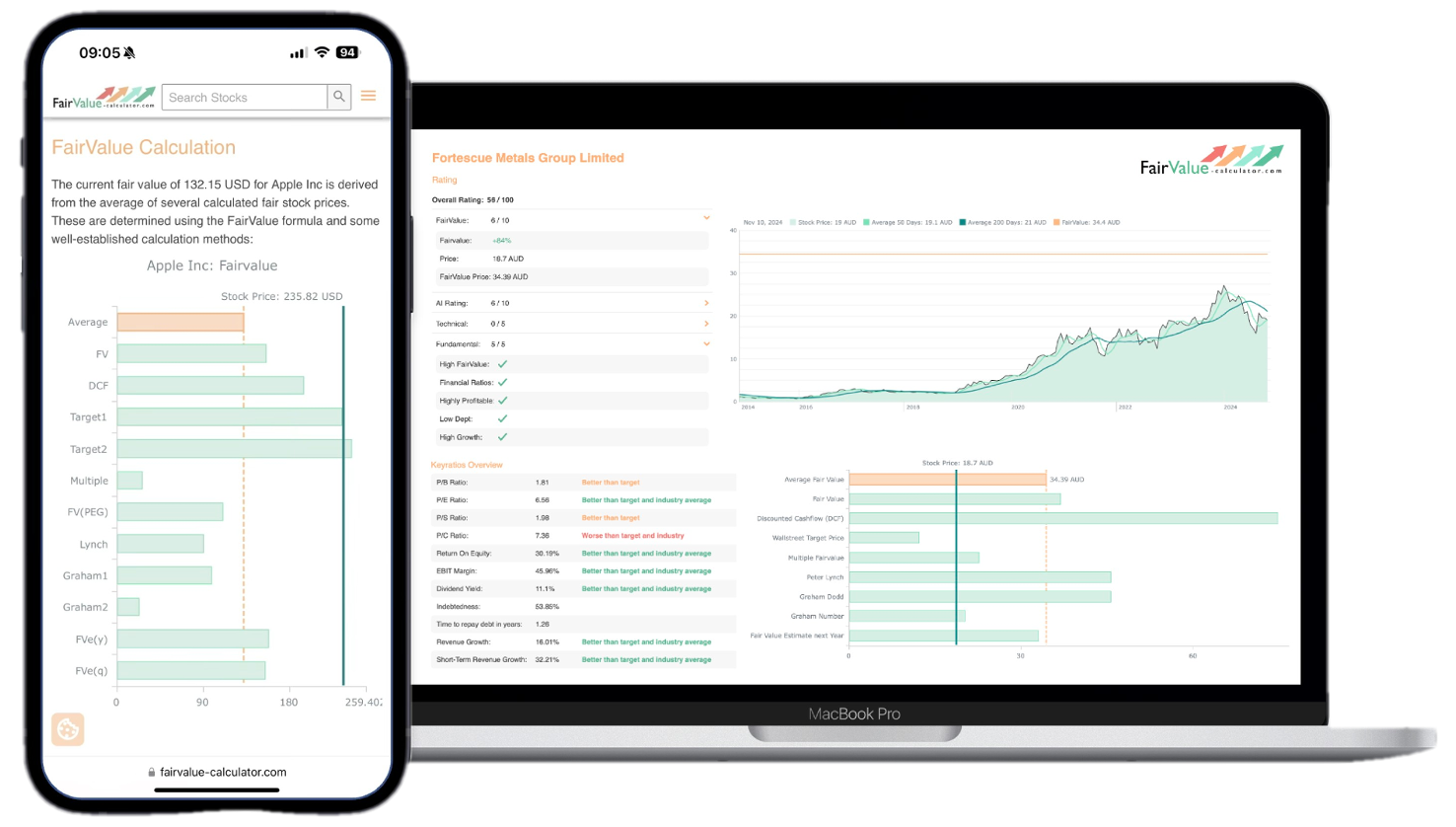Intrinsic Value: Must-Have Guide for Undervalued Stocks
Understanding Intrinsic Value in Stock Market Investing
For savvy investors, understanding intrinsic value is crucial for successfully navigating the complexities of the stock market. This key concept represents a stock’s true worth, free from the distractions of daily fluctuations driven by market sentiments. By exploring intrinsic value stocks, investors can uncover rewarding opportunities, particularly within the realm of undervalued stocks. In our ever-evolving financial landscape, innovations in artificial intelligence (AI) and advanced analytics have transformed traditional valuation methodologies, such as the Discounted Cash Flow (DCF) model and the Graham number. This evolution opens new doors to more sophisticated and accurate stock analysis.
💡 Discover Powerful Investing Tools
Stop guessing – start investing with confidence. Our Fair Value Stock Calculators help you uncover hidden value in stocks using time-tested methods like Discounted Cash Flow (DCF), Benjamin Graham’s valuation principles, Peter Lynch’s PEG ratio, and our own AI-powered Super Fair Value formula. Designed for clarity, speed, and precision, these tools turn complex valuation models into simple, actionable insights – even for beginners.
Learn More About the Tools →What is Intrinsic Value?
At its core, intrinsic value refers to the inherent worth of an asset, especially stocks. Unlike market value, which can be swayed by temporary trends and investor emotions, intrinsic value provides a stable and objective framework for assessment. Determining intrinsic value involves an in-depth analysis of a company’s financial fundamentals—including earnings, dividends, and growth potential—offering investors a clearer and more reliable outlook for strategic decision-making.
🚀 Test the Fair Value Calculator Now!
Find out in seconds whether your stock is truly undervalued or overpriced – based on fundamentals and future growth.
Try it for Free →The Importance of Fair Value in Investing
Understanding fair value is not merely beneficial; it’s vital for all investors. This benchmark serves as the foundation for evaluating current market prices. When a stock is priced below its intrinsic value, it is often categorized as undervalued, signaling a potential buying opportunity. Conversely, stocks traded above their intrinsic value may be deemed overvalued, necessitating caution. Recognizing these disparities is crucial for implementing informed strategies aimed at maximizing investment returns.
Explore our most popular stock fair value calculators to find opportunities where the market price is lower than the true value.
- Peter Lynch Fair Value – Combines growth with valuation using the PEG ratio. A favorite among growth investors.
- Buffett Intrinsic Value Calculator – Based on Warren Buffett’s long-term DCF approach to determine business value.
- Buffett Fair Value Model – Simplified version of his logic with margin of safety baked in.
- Graham & Dodd Fair Value – Uses conservative earnings-based valuation from classic value investing theory.
- Intrinsic vs. Extrinsic Value – Learn the core difference between what a company’s really worth and what others pay.
- Intrinsic Value Calculator – A general tool to estimate the true value of a stock, based on earnings potential.
- Fama-French Model – For advanced users: Quantifies expected return using size, value and market risk.
- Discount Rate Calculator – Helps estimate the proper rate to use in any DCF-based valuation model.
Methods to Calculate Intrinsic Value
Several methodologies exist to estimate the intrinsic value of a stock, with the Discounted Cash Flow (DCF) model and the Graham number standing out as the most recognized approaches.
The DCF Model: A Comprehensive Approach
The Discounted Cash Flow model provides a systematic method for estimating intrinsic value based on anticipated future cash flows, discounted back to their present value. Here’s how to apply the DCF model effectively:
1. Estimate Future Cash Flows: Examine historical data to forecast a company’s future performance, taking into account expected revenue growth, expenses, and market conditions.
2. Determine the Discount Rate: This critical rate reflects the returns investors expect, converting future cash flows into present value.
3. Calculate Present Value: Utilize the established discount rate to derive the present value of future cash flows.
4. Sum and Calculate Intrinsic Value: Total these present values to determine the stock’s intrinsic value, allowing for direct comparisons with its current market price.
Utilizing the Graham Number
The Graham number, established by Benjamin Graham—the father of value investing—offers a quicker method for evaluating whether a stock is undervalued. The formula to calculate the Graham number is:
[ text{Graham Number} = sqrt{22.5 times text{EPS} times text{BVPS}} ]
Where EPS stands for Earnings Per Share and BVPS denotes Book Value Per Share. If a stock’s market price falls below its Graham number, it may indicate a compelling buying opportunity.
The Role of AI in Valuation
The rise of AI in stock analysis has significantly reshaped conventional methodologies, enabling rapid processing of vast datasets to unveil patterns and relationships often overlooked by human analysts. This capability not only enhances traditional valuation methods like the DCF model and Graham number but also integrates macroeconomic indicators and dynamic market conditions.
How AI Valuation Works
AI-driven valuation leverages advanced machine learning algorithms that continuously refine their performance. These systems analyze extensive datasets to identify macroeconomic variables affecting stock prices, thereby enhancing forecasting accuracy. Moreover, AI automates financial modeling, reducing human error and expediting the analytical process. By analyzing multiple stocks simultaneously, these algorithms can quickly identify undervalued opportunities, empowering investors to act swiftly and capitalize on market inefficiencies.
Conclusion: The Future of Stock Analysis
In summary, grasping the intrinsic value of stocks is a cornerstone of effective value investing and a powerful tool for uncovering opportunities in the market. Employing methods such as the DCF model and the Graham number equips investors with the resources needed to determine the true worth of stocks, spotlighting undervalued assets. As AI continues to evolve, its growing role in stock analysis promises to deepen investment insights and streamline decision-making processes. Looking ahead, AI-driven valuation techniques are set to become integral in shaping investment strategies. This evolution will enhance our understanding of intrinsic value stocks, paving the way for informed investment choices and ultimately maximizing returns for discerning investors.


